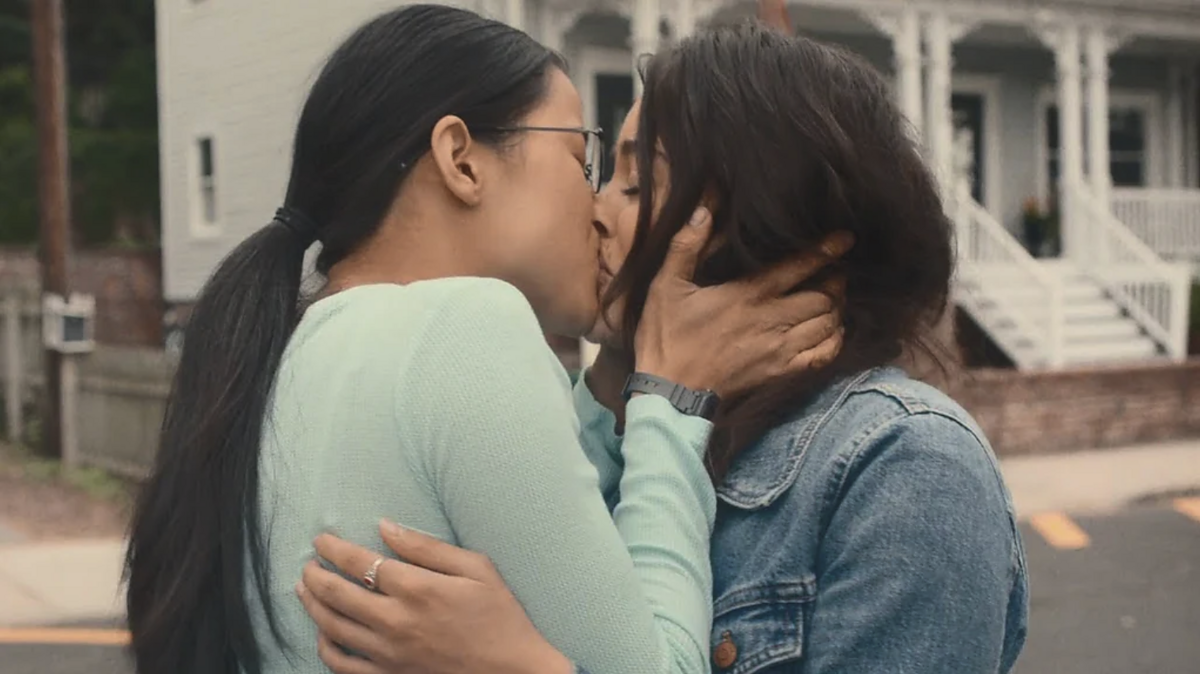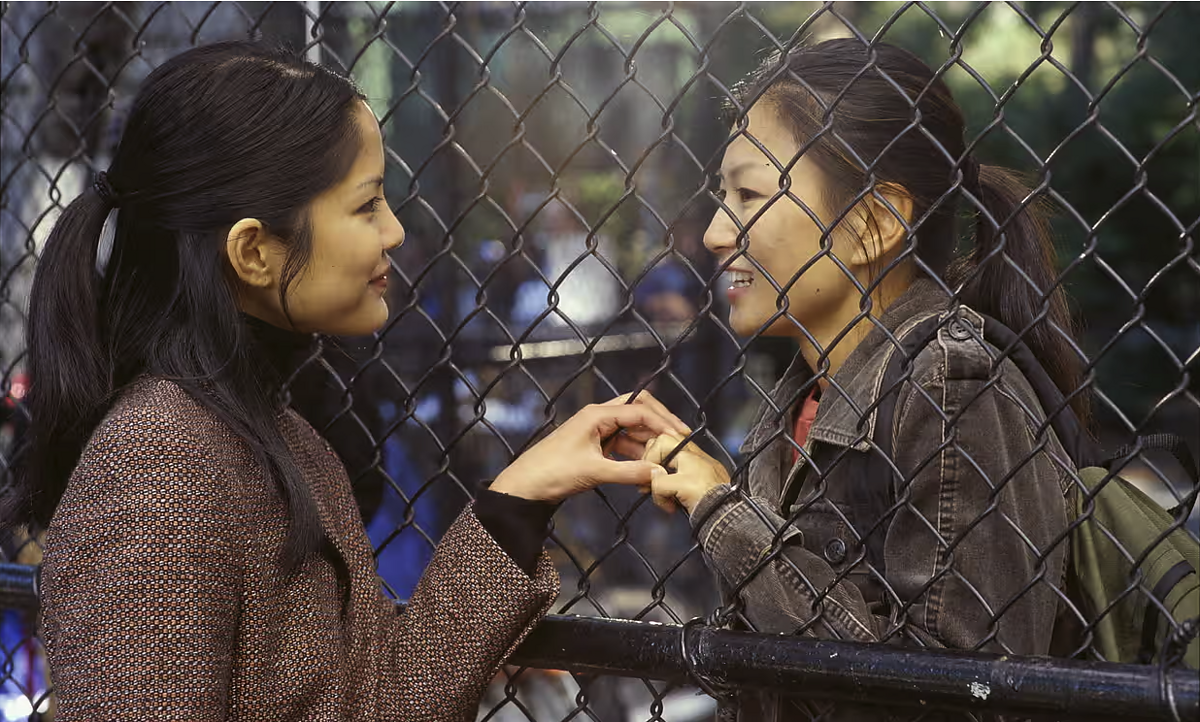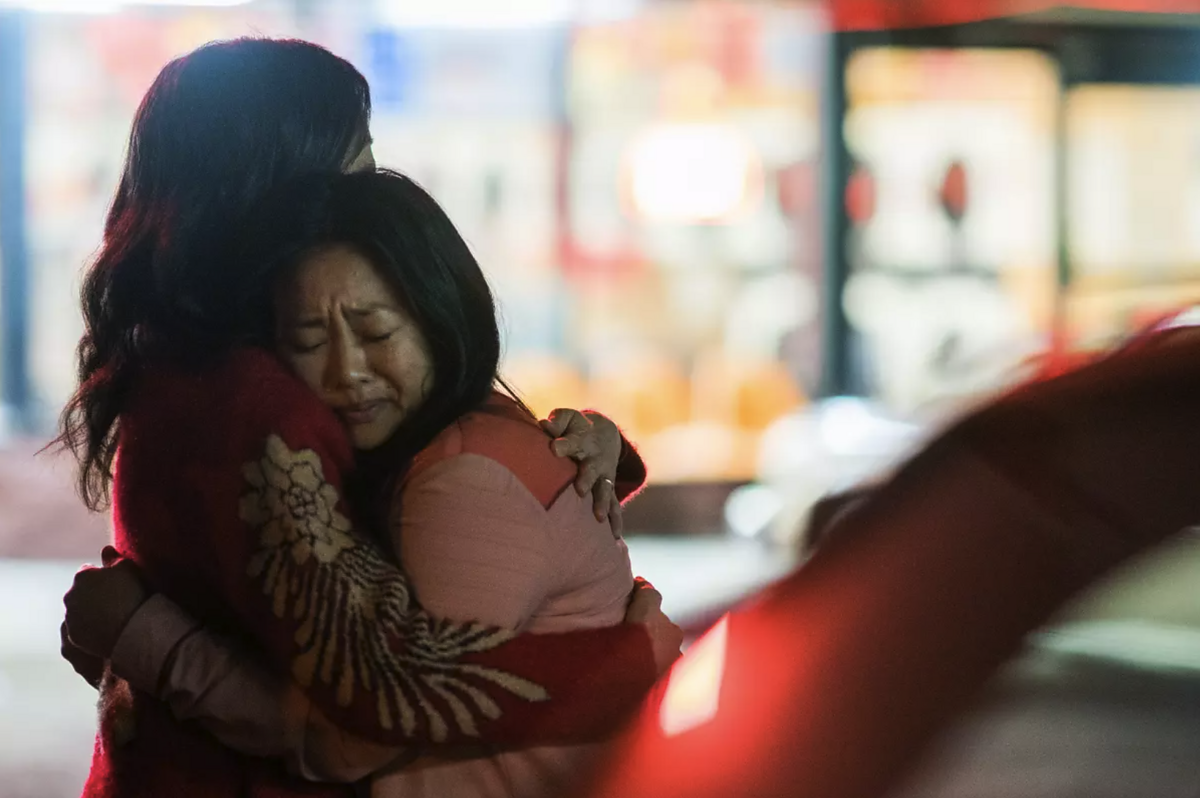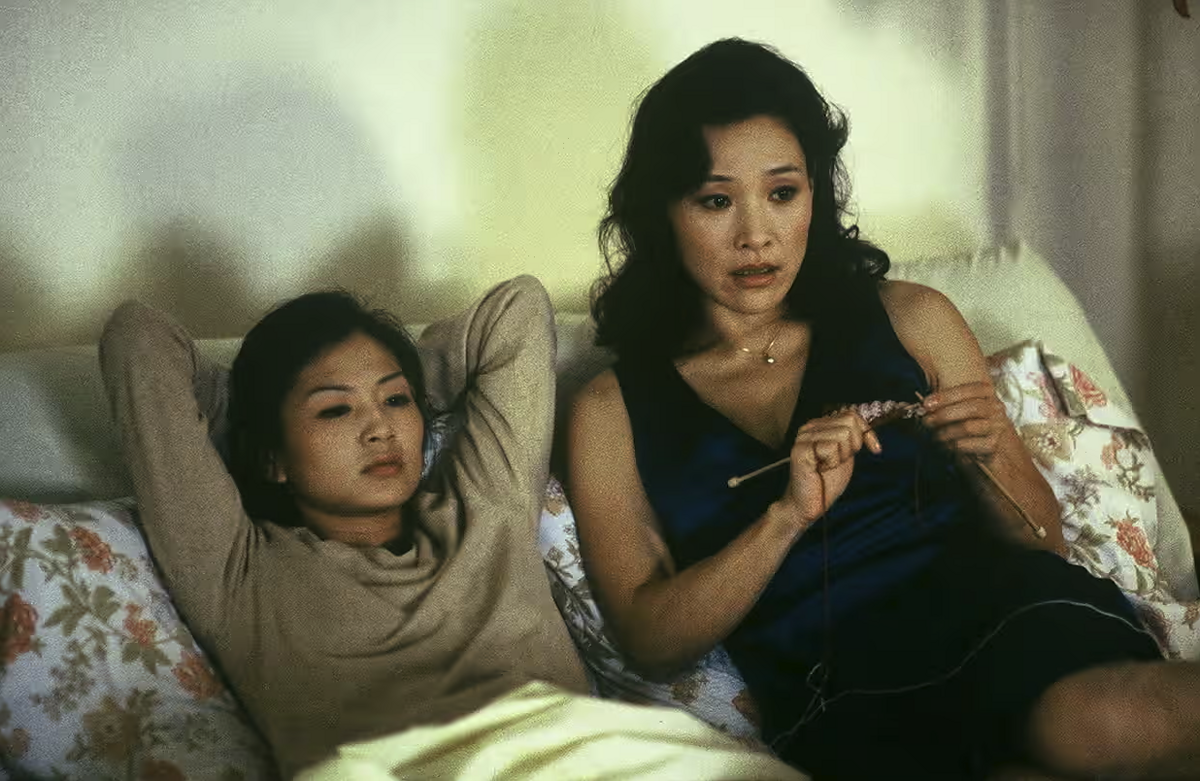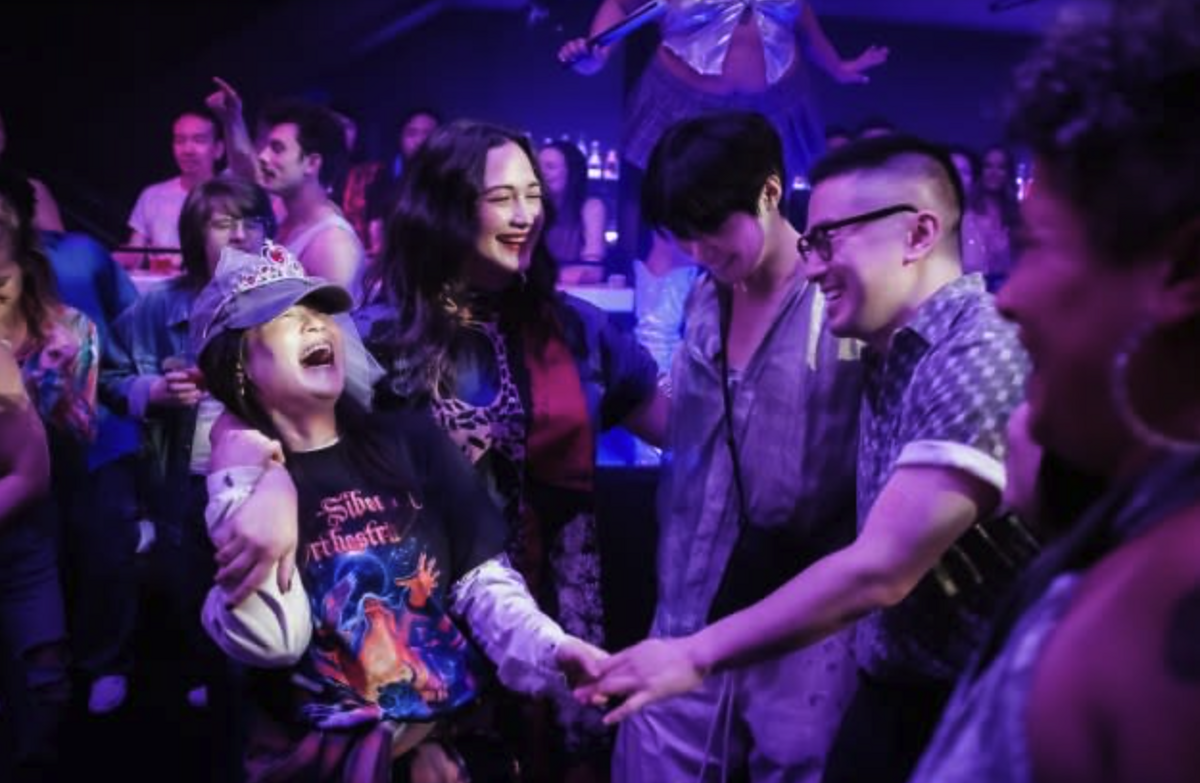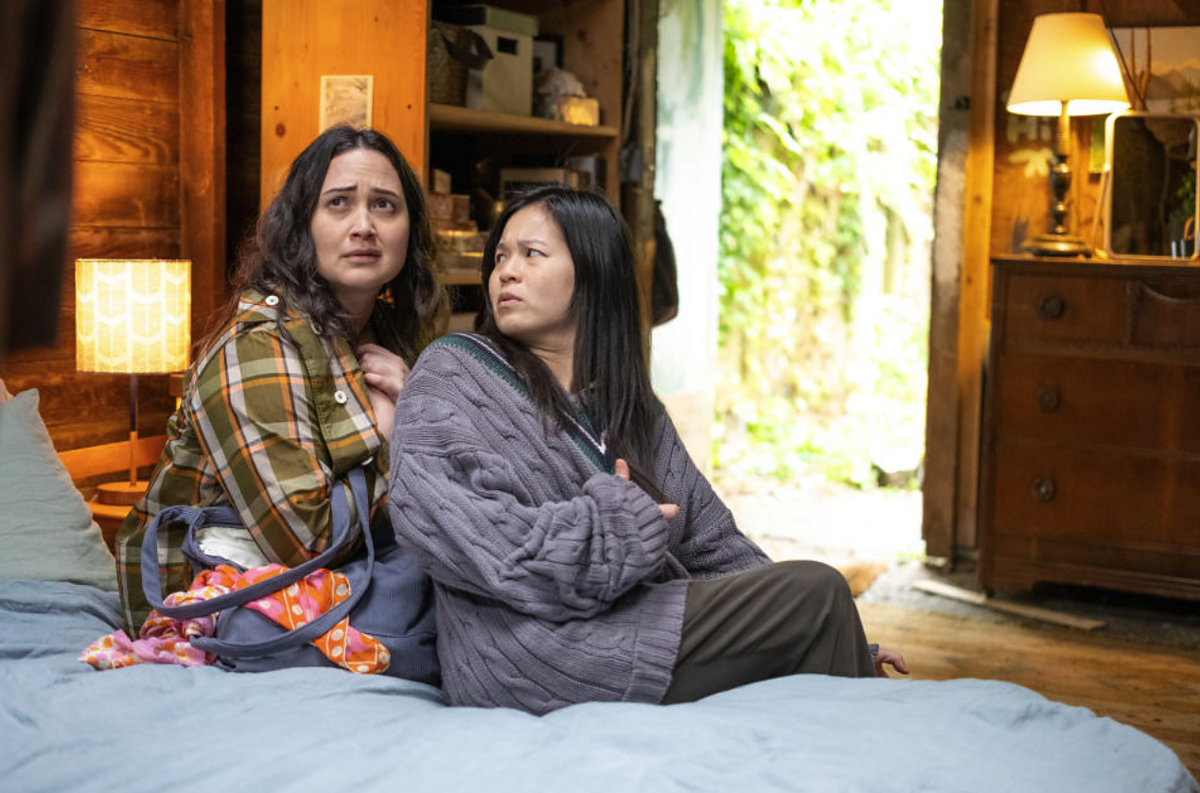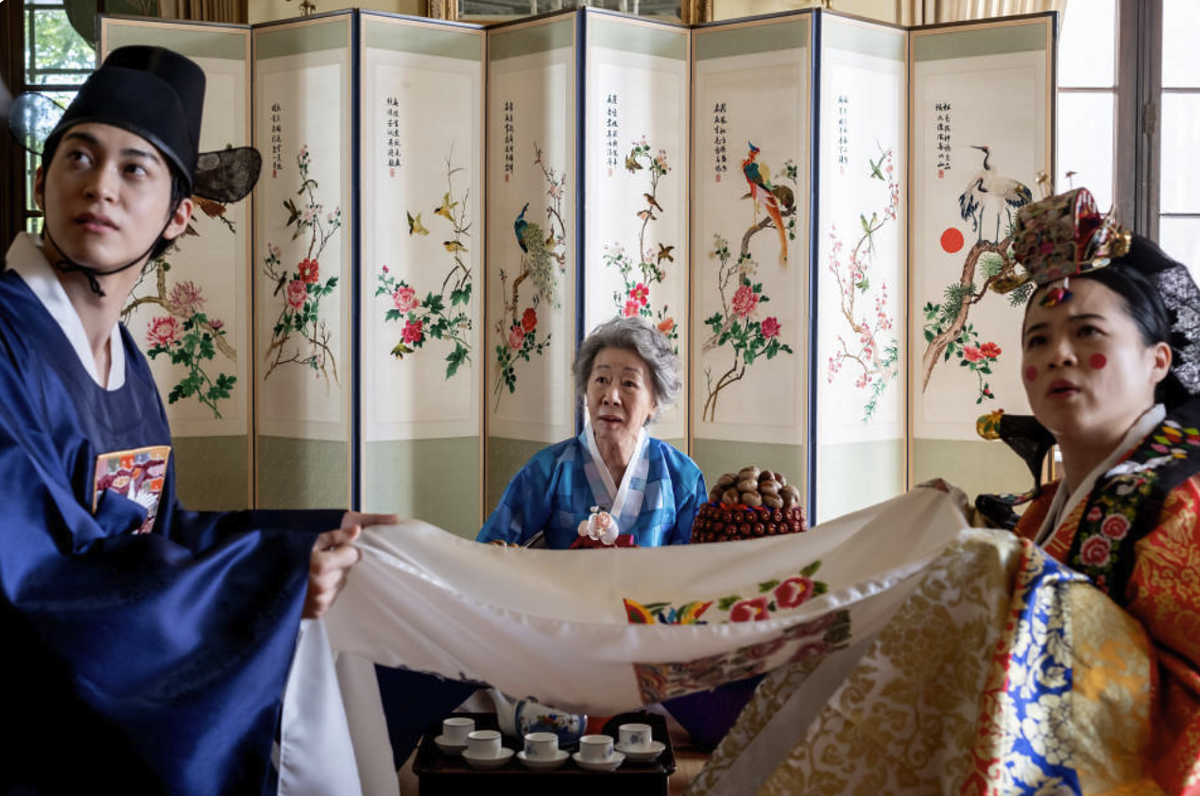Finding Happy Endings for Queer Daughters in AAPI Cinema
In 2000, scholar Chris Berry observed a character archetype in contemporary East Asian queer cinema: the family-averse and existentially isolated queer son, namely A Lan in East Palace West Palace (1996), Ho and Lai in Happy Together (1997), and Hsiao-kang in Vive L’amour (1994). Unfortunately, these films do not end well for such characters.
Since Berry’s observations, it has taken some time for queer joy to be represented on the silver screen, particularly for AAPI femmes.
Needless to say, it’s a relief to find that we are currently in a cinematic era where the intersections of gender, sexuality, diaspora, and culture have found happy endings. This has been especially true for representations of queer AAPI daughters. Films such as Saving Face (2004), The Half of It (2020), and Everything Everywhere All At Once (2022) feature such characters who embrace and are embraced by their families, despite how their identities position them within the films’ conflicts.
In many East Asian cultures, filial piety can be understood as the hierarchical relationship between parent and child founded on the ethos of mutually caring reciprocity. Films in recent years have approached the Confucian philosophy in new queer contexts.
In Saving Face, Wil (played by Michelle Krusiec) takes in her pregnant and disowned mother Hwei-lan (Joan Chen). “Do you know what kind of karmic hell I’d pay as a Chinese daughter who didn’t take in her own mom?,” Wil asks.
Similarly, The Half of It establishes its protagonist, Ellie (Leah Lewis), as decidedly responsible for everything. She refuses to leave her hometown for a prestigious college so she can take care of her depressed father, Edwin (Collin Chou), and writes papers for other students to earn extra money to pay the bills.
And even though Joy (Stephanie Hsu) from Everything Everywhere All At Once initially rejects her mother Evelyn (Michelle Yeoh), with her alter ego Jobu Tupaki even seemingly trying to kill her—the end of the film poignantly shows that despite all the pain between them, the mother-daughter pair are still drawn to love and need each other. Evelyn ultimately and wholeheartedly accepts Joy’s queerness and her girlfriend Becky (Tallie Medel). Another often overlooked moment is when Joy’s grandfather, Gong Gong (James Hong), takes Becky’s hands in his and acknowledges her as Joy’s girlfriend.
It’s notable that throughout these efforts, these daughters never compromise on their queerness—it’s a big reason why their happy endings are so cathartic. These films brilliantly and delicately balance the exchange of love within filial piety, showing how the families also make the effort to change their expectations of what their daughters “should” be.
Hwei-lan comes around to Wil’s sexuality, helping her daughter chase down her love interest and comforting her when it doesn’t go as planned. Months later, Hwei-lan even schemes to reunite the two, who ultimately get back together with both of their mothers’ explicit support. The film ends with Hwei-lan asking Wil, “When are you going to have a baby?”
Meanwhile, in The Half of It, Ellie’s sexuality is never a point of familial conflict. In fact, Edwin defends Ellie to her friend who is struggling to come to terms with her own sexuality, sharing how much he loves his daughter and that he wouldn’t change a thing about her.
These films and characters upset our expectations of queer AAPI narratives in film. We are used to seeing characters repressing their queerness and having to deal with being rejected from their families. These films, however, are a radical site for reimagining what the lives of queer AAPI daughters could be.
In this intersection of gender, sexuality, diaspora, and family culture, scholars like Gayatri Gopinath in Impossible Desires, and Cindy Patton and Benigno Sánchez-Eppler in Queer Diasporas, have recognized the potential to “reinvent, renegotiate, and reimagine.” Gopinath writes, “By making female subjectivity central to a queer diasporic project, it begins instead to conceptualize diaspora in ways that do not invariably replicate heteronormative and patriarchal structures of kinship and community.”
The latest addition to this cinematic phenomenon is filmmaker Andrew Ahn’s upcoming remake of The Wedding Banquet (1993). Originally co-written, produced, and directed by Ang Lee nearly 30 years ago, the film received an Academy Award nomination for Best Foreign-Language Film and was the year’s top grossing movie. Just last year, the film was recognized for its sustained cultural significance and added to the Library of Congress’ National Film Registry.
Lee’s original film follows a gay and partnered Taiwanese American man who arranges a marriage of convenience with a Chinese woman to deal with his parents’ increasing pressure to marry. What initially seems like a clever plan to appease his parents and get the woman a green card backfires when his parents surprise him in New York to throw a grand wedding banquet. Chaos ensues as secrets are tested and truths come to light.
Ahn’s upcoming remake intends to be much, much queerer. Known for his growing oeuvre of queer films like the award-winning Spa Nights (2016) and Fire Island (2022), Ahn cast Bowen Yang as the groom looking to marry for a green card after a failed proposal to his boyfriend. The groom decides to convince his best friend (Kelly Marie Tran) to marry him in exchange for paying for her partner’s (Lily Gladstone) IVF treatment. However, things go awry when the groom’s grandmother makes a surprise visit to throw “the couple” an extravagant Korean wedding banquet.
While the general conflict of Ahn’s remake is similar to Lee’s original film, Ahn’s remake includes a queer femme relationship in the hijinks of the fake wedding. Every character in this triangular scheme of deception is joyously queer. Thus, Ahn’s reimagination of The Wedding Banquet promises to take its place in the growing phenomenon of queer AAPI daughters who, in the end, find happiness in their identities.
—Sidnee Lim is a Singaporean-Malaysian filmmaker currently doing their masters in Film and Media Studies at Columbia University. They spend their free time across creative projects reflecting on queerness and immigration, and you can find more of Sidnee’s writing at Naya Magazine and Fellows Collective.
